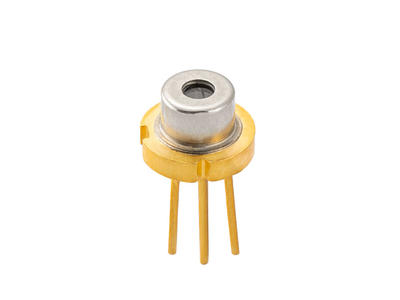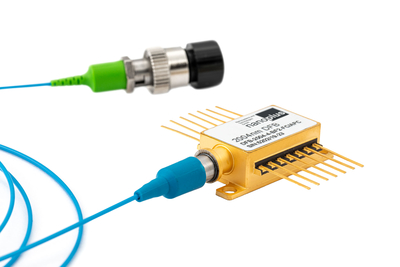

Select your target wavelength at any wavelength between 1650 nm and 1850 nm. The table below presents typical specifications, available mountings as well as application references & further reading.
|
parameters
|
symbol
|
unit
|
minimum
|
typical
|
maximum
|
|---|---|---|---|---|---|
|
parameters
operating wavelength (at Top, Iop) |
symbol
λop |
unit
nm |
minimum
|
typical
0.1 nm |
maximum
|
|
parameters
optical output power (at λop) |
symbol
Pop |
unit
mW |
minimum
|
typical
5 |
maximum
|
|
parameters
operating current |
symbol
Iop |
unit
mA |
minimum
|
typical
70 |
maximum
|
|
parameters
operating voltage |
symbol
Vop |
unit
V |
minimum
|
typical
2 |
maximum
|
|
parameters
threshold current |
symbol
Ith |
unit
mA |
minimum
10 |
typical
35 |
maximum
65 |
|
parameters
side mode suppression ratio |
symbol
SMSR |
unit
dB |
minimum
|
typical
> 35 |
maximum
|
|
parameters
current tuning coefficient |
symbol
CI |
unit
nm / mA |
minimum
0.008 |
typical
0.02 |
maximum
0.03 |
|
parameters
temperature tuning coefficient |
symbol
CT |
unit
nm / K |
minimum
0.07 |
typical
0.10 |
maximum
0.14 |
|
parameters
operating chip temperature |
symbol
Top |
unit
°C |
minimum
+20 |
typical
+25 |
maximum
+50 |
|
parameters
operating case temperature (non-condensing) |
symbol
TC |
unit
°C |
minimum
-20 |
typical
+25 |
maximum
+50 |
|
parameters
storage temperature (non-condensing) |
symbol
TS |
unit
°C |
minimum
-40 |
typical
+20 |
maximum
+80 |








Hydrogen chloride, methane, ethane and nitrogen oxide show absorption features in the wavelength window between 1650 nm and 1850 nm.
nanoplus distributed feedback lasers show outstanding spectral, tuning and electrical properties.

Typical spectrum of a nanoplus 1742 nm distributed feedback laser diode

Typical mode hop free tuning of a nanoplus 1742 nm distributed feedback laser diode

Typical power, current and voltage characteristics of a nanoplus 1742 nm distributed feedback laser diode
nanoplus uses a unique and patented technology for DFB laser manufacturing. We apply a lateral metal grating along the ridge waveguide, which is independent of the material system. Read more about our patented distributed feedback technology.
